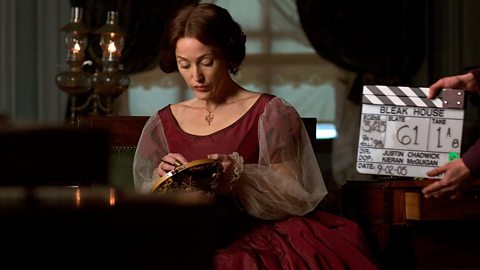Clothes from other cultures
If a play demands the costumes of another culture, itâs vital that theyâre done properly. In every country in the world we accept our own clothes as natural and we look more critically at the clothes of other nations. If you wish to represent a Japanese geishaA highly trained, female, Japanese, traditional entertainer and hostess., for instance, you must pay attention to detail. If you comment on such a costume, you should note how convincing it was and what it gave to the role. It should, in other words, be a truthful representation. Remember also that make-up is a key element of how the audience âreadsâ and identifies a character. Look at Drama medium to learn more about the importance of make-up.

Period costume
The expression period costume refers to costumes from a particular era. Generally, there are much more specific expectations for the rich than the poor or âpeasantsâ. The Tudor doublet and farthingaleA doublet is a tight-fitting jacket worn by men and a farthingale is a hooped skirt worn by women during Tudor times (1485-1603). and the Victorian crinolineA sprung steel cage designed to create the ample bell shaped skirt. It replaced the earlier horse hair and linen design. are examples of this. Regency period men (1811-1820) as immortalised by the author Jane Austen wore tailcoats and breeches. The Regency ladies had different dresses for different occasions, eg visiting gowns and carriage dresses.
